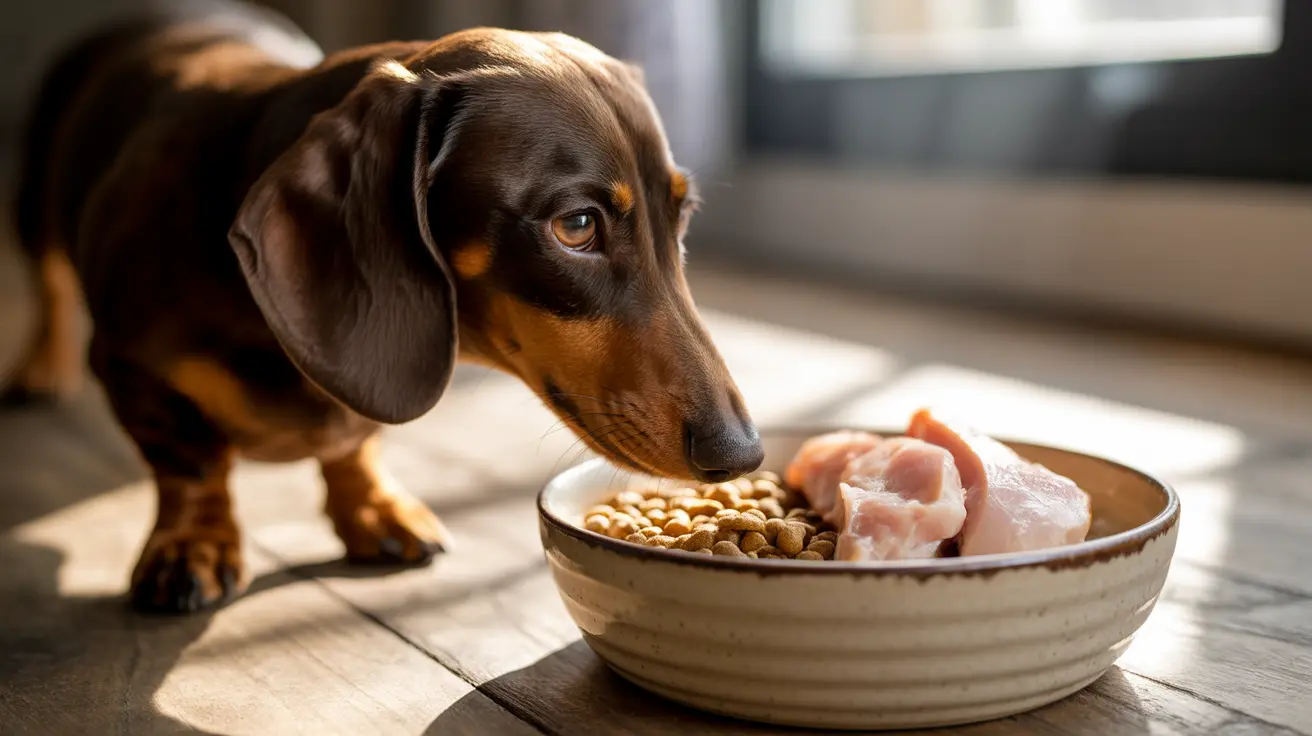Introduction
Wondering what you can mix with your dog's dry food to make it more appealing and nutritious? Many pet parents are discovering that enhancing kibble with healthy additions can boost their dog's enthusiasm for mealtime while providing extra nutritional benefits. From fresh proteins to vitamin-rich produce, there are numerous safe and healthy options to mix with your dog's dry food.
In this comprehensive guide, we'll explore veterinarian-approved ingredients that can transform your pet's regular kibble into a more exciting and nutritious meal, while maintaining the crucial balance of their diet. We'll also cover proper portions, safety considerations, and specific benefits of different mix-ins.
Understanding the 90/10 Rule for Dog Food Mix-ins
Before diving into specific ingredients, it's essential to understand the fundamental principle of mixing additions with dry dog food. Veterinarians recommend following the 90/10 rule: 90% of your dog's daily calories should come from their complete and balanced dry food, while mix-ins should account for no more than 10% of daily calories.
This ratio ensures your dog receives proper nutrition without disrupting their dietary balance or causing unnecessary weight gain. Always adjust the amount of kibble downward when adding calorie-rich mix-ins to maintain appropriate daily caloric intake.
Safe and Nutritious Mix-in Options
Protein-Rich Additions
Adding lean proteins can enhance your dog's meal with high-quality amino acids and essential nutrients. Consider these options:
- Cooked, lean chicken or turkey (no skin or bones)
- Plain, cooked eggs
- Low-sodium canned sardines in water
- Lean beef or lamb
Beneficial Fruits and Vegetables
Fresh produce can add fiber, vitamins, and antioxidants to your dog's diet. Safe options include:
- Sweet potatoes (cooked and mashed)
- Carrots (raw or cooked)
- Green beans
- Apple slices (no seeds)
- Blueberries
- Pumpkin puree (plain, not pie filling)
Moisture-Adding Options
Increasing moisture content can improve palatability and support hydration. Try these additions:
- Low-sodium chicken or beef broth
- Plain, non-fat yogurt (check for xylitol-free products)
- Water (warmed slightly to release kibble's aroma)
- Goat's milk (specially formulated for dogs)
Best Practices for Mixing Food
Introducing New Ingredients
When adding new mix-ins to your dog's dry food, follow these guidelines:
- Start with small amounts
- Introduce one new ingredient at a time
- Monitor for any digestive issues
- Wait 3-4 days before introducing another new ingredient
Food Safety and Storage
Maintain proper food safety with these practices:
- Store unused portions of wet mix-ins in airtight containers
- Refrigerate perishable items immediately
- Discard any mixed food left at room temperature after 2 hours
- Clean bowls thoroughly after each meal
Foods to Avoid
While many human foods are safe for dogs, some can be dangerous. Never mix these items with your dog's food:
- Onions and garlic
- Grapes and raisins
- Chocolate
- Foods containing xylitol
- Seasoned or processed meats
- Raw fish or meat
- Dairy products high in lactose
Frequently Asked Questions
What are some healthy, vet-approved mix-ins I can add to my dog's dry food for extra nutrition and flavor?
Healthy mix-ins include lean cooked meats, eggs, plain pumpkin puree, fresh vegetables like carrots and green beans, and small amounts of plain yogurt. Always introduce new ingredients gradually and in moderation.
How much of my dog's daily calorie intake should come from dry food versus mix-ins, and why?
Follow the 90/10 rule: 90% of calories should come from complete dry food and only 10% from mix-ins. This ensures your dog receives balanced nutrition while allowing for healthy variety in their diet.
Can I mix wet and dry dog food together, and what are the benefits of doing so?
Yes, you can mix wet and dry dog food. Benefits include increased moisture intake, enhanced palatability, and variety in texture. Just ensure you adjust portions to maintain appropriate calorie intake.
Why is it important to introduce new foods gradually when adding them to my dog's dry food, and what signs should I watch for?
Gradual introduction helps prevent digestive upset. Watch for signs of intolerance such as vomiting, diarrhea, excessive gas, or changes in appetite or behavior. If these occur, discontinue the new ingredient and consult your veterinarian.
Are homemade dog food toppers safe, and how can I ensure they provide balanced nutrition for my pet?
Homemade toppers can be safe when prepared properly without harmful ingredients. Stick to simple, dog-safe ingredients and maintain the 90/10 rule. Consult your veterinarian for specific recommendations based on your dog's needs.
Conclusion
Enhancing your dog's dry food with healthy mix-ins can provide additional nutrients and make mealtimes more enjoyable for your pet. Remember to maintain proper proportions, introduce new ingredients gradually, and always consult with your veterinarian about specific dietary needs, especially for dogs with health conditions or dietary restrictions.






